
|
|
Alchemy Academy archive March 2002 Back to alchemy academy archives. Subject: ACADEMY : John Dee film From: Michal Pober Date: Fri, 1 Mar 2002 Dear Friends, On Tuesday 5th March a new film about JOHN DEE will be shown by the BBC on Channel 4. It was made by Diverse Films, directed by Neil Rawles and produced by Marcus Sulley who have also made a film about Alistair Crowley and are currently completing a film about Casanova. This film wasshot last year, partly in the Czech Lands with on-site locations in some of the most interesting and attractive places associated with Dee and Kelley - including Trebon, Cesky Krumlov and Krivoklat, places which are also included in the Magical Journeys in Bohemia which I also organise. I had the pleasure of 'fixing' the logistics for the film. Though it was April we faced extreme weather hardship, with a mighty snowstorm in Krivoklat and unceasing rain in Trebon, which however made for some scenic moments in addition to chilled bones. Unfortunately I haven't seen the film yet, am expecting it daily; when its here I'll arrange private viewings in Prague and also in Cesky Krumlov. For those of you in England it will be easy enough to see if you have a TV! since I don't have one I have no idea whether there are cable or satellite connections here or in other countries which would ennable you to see it but hope that perhaps there are and that this information will be of practical value! Perhaps it will come around later??!! I'd be interested to hear feedback from anyone who does let to see it.. Meanwhile we have an official opening date for the Alchemy Museum in Kutna Hora: Thursday 16th May, 2002 at 6 p.m. More about this later! With best regards, Michal Pober Subject: ACADEMY : John Dee film From: Herb Wolfertz Date: Tue, 5 Mar 2002 Michal Pober: Thank you for your post concerning the "John Dee" film. As I live on the other side of the Atlantic, is there any possibility that this film will ever reach the American market????? If you hear of anything on this, please, if you will, let me know. Thanks in advance for your consideration!!!!! Best Wishes, Herb Wolfertz Subject: ACADEMY : Monas Hieroglyphica of John Dee and Leibnitz's Monadology Date: Mon, 11 Mar 2002 From: Tatiana Dolinina Dear Colleagues! Does anybody know if there has been any research (scholarly or other) on possible prior roots of Leibnitz's Monadology - via Rosicrucian routs of knowledge or/and from theological concepts and doctrines of the time (or preceding), mystical (non-canonical or canonical) Christianity & so on... Any advice or references would be mostly appreciated. Thank you all very much in advance. Sincerely, Tatiana Dolinina Subject: ACADEMY : Alchemy museum opening May 16th, 2002 From: Michal Pober Date: Fri, 8 Mar 2002 Dear Friends, Finally we see the achievement in sight for which many of us here have worked long and hard - in the full realisation that this will only be a beginning and that the real demands of sustaining and nurturing this project will likely increase rather than diminish! So first let me invite you, on- and-all who are able to join us on this historic day to come to Kutna Hora and share the day with us. Or even a few days, because we may organise a small programme if there is a way to do so and the demand is there. The inauguration will be at 6p.m. and there will be a fine concert with our friends from Kvinterna - an alchemically inspired band from Cesky Krumlov. The party will continue. Precise details are not yet finalised. This will also be a time to thank and honour all those who have carried the vision from the beginning: Roman Rozensky, Lubos Antonin, Libor Koudela, our former mayor Ivo Sanc and those who have contributed to its manifestation with time, money and energy, especially Pavel Novak and Petra Naceradska who have been through almost all the trials and tribulations with me to reach this conclusion and Nicholas and Clare Goodrick-Clarke who have been stalwart pilgrims throughout and Christopher McIntosh who has also been a true friend and inspiration and has already promised his attendance. There are many, many more both here and abroad who will all be honoured in due course. Here on the ground I would also like to especially thank at this time Vladimir Karpenko whose work has been of the utmost help and whose generosity of time has been unstinting. There is much more to tell! Many more plans for the Hermetic College, many more stages for the Museum to evolve through. In the next few days I will be launching a full-throttle effort to achieve a golden result. This may mean that you'll hear more from me! Those who pledged donations last year when we were negotiating with the City are more than welcome to honour those pledges now! We neglected the usual fundraising channels in the aftermath of last autumn's events and now the squeeze is on! The cupboards are bare and we will be paying staff and using full-time office space soon. Donations in any amount will be very greatly appreciated and will go a long way still here. But if its a choice of donating or being here then come! Someone else won't be able to make it and they'll send money instead! The list will bevery interesting! Very shortly, after a quick weekend trip, for example, I'll be posting a translation of a fascinating document which is a cornerstone of our whole project. This is the alchemical recipe which was transmitted to Hynek Minsterbersky, son of the Czech King George of Podebrady. Always believed to have been an alchemist and to have had his laboratory in the very building where our museum is located, this finally was demonstrated through a discovery of Lubos Antonin's and the diligent research of Dr Karpenko to be the real stuff of legends. And the list will also be a vehicle for deciding on future projects. We need the contact and the input to keep us grounded in providing the kind of programmes that will be of real value and interest. After 2 years at Roztez Manfred Junius has moved on to other pastures and his particular insights will be missed here. But the Hermetic College will flourish again and we'll have lots of other ideas to discuss.. There's a bibliophile tour pending and the next John Dee Conference will also be held in Kutna Hora. So please join the list! Details are belowand in whatever way you can please let your energy shine on our project and be with us on the 16th May in the flesh or in spirit. With very best wishes! Michal Pober ******************************************************************************** NEW: THE ALCHEMY MUSEUM LIST!! Information and discussion about the Alchemy Museum, the Hermetic College and Magical Journeys in Bohemia Subscribe at: http://www.topica.com/lists/alchemy.museum or send a BLANK email to: alchemy.museum-subscribe@topica.com Topica will automatically send you a confirmation message. This is a moderated list. Registered Topica users can unsubscribe from on the web with the click of a button. You can also unsubscribe by sending a BLANK email to: alchemy.museum-unsubscribe@topica.com CONTACT INFO: Michal Pober President of the Civic Association for an Alchemy Museum in Kutna Hora U Jelena 489, 284 01 Kutna Hora, Czech Republic. T: +420 327/511 259 F: +420 327/511 260 M: +42 0603 30 80 24 short text message [max. 140 characters]: +420603308024@sms.paegas.cz mailto:museum@alchemy.cz http://www.alchemy.cz Subject: ACADEMY : Cipher Manuscripts From: Hereward Tilton Date: Wed, 13 Mar 2002 Dear Academy, Here's a question unrelated to alchemy, but... does anyone know where the cipher manuscripts that formed the basis for the rituals of the Hermetic Order of the Golden Dawn are currently residing? Hereward Tilton Subject: ACADEMY : Cipher Manuscripts From: Henrik Bogdan Date: Wed, 13 Mar 2002 According to R. A. Gilbert there are seven major collections of Golden Dawn materials, of which only two are institutional libraries; National Library of Ireland (Yeats's papers) and The Warburg Institute, London (F. L. Gardner's papers). The other five collections are in private hands, of which only two are publicly known - Gilbert's collection, and the late Carr Collin's collection. I have the impression that the Cipher Manuscripts lies hidden in one of the remaining three collections, but I would welcome more specific information as to its whereabouts. Yours, Henrik Bogdan, Ph. D. Cand. University of Göteborg Subject: ACADEMY : Cipher Manuscripts From: Adam McLean Date: Wed, 13 Mar 2002 Henrik Bogdan wrote : >I have the impression that the Cipher >Manuscripts lies hidden in one of the remaining three >collections, but I would welcome more specific information >as to its whereabouts. As far as I am led to understand, the Golden Dawn cipher manuscript is among Wescott's papers which are in the private library of the Soc. Ros. - The Societas Rosicruciana in Anglia. This is a special society with an exclusively Masonic membership. Being neither a mason nor a member of this interesting society, I should not know this. But someone must have stepped out of line and told me ! Some years ago someone, I think it was Mike Magee, published a little booklet reproducing the pages from the manuscript. I have a copy somewhere amongst my papers. Adam McLean Subject: ACADEMY : Ripley Scroll From: Adam McLean Date: 13th March 2002 It is with a touch of sadness that I must announce the demise of a Ripley Scroll. The accepted listing of Ripley Scrolls is that in the second edition of Jacques van Lennep's 'Alchimie' Here van Lennep lists 20 manuscripts in the supposed historical order. He notably missed the one owned by Manly Palmer Hall, now in the Getty Research Library. Also his list was drawn up long before another later version (which I pointed out to the academy group last year) was auctioned at Sotheby's in December 2000. This meant we had 22 manuscript examples of the Ripley Scroll. The last item on van Lennep's list is described as :- Location unknown. Manuscript sold at Sotheby (Dyson Perrins sale) 29th Nov 1960 (lot 147) One might has supposed that this could have been the copy resold at Sotheby's in 2000, so I managed to get access to a copy of the Dyson Perrins sale catalogue through the good offices of the Ritman Library - (Bibliotheca Philosophica Hermetica) and luckily there was a good quality photograph of lot 147. This was obviously not the Sotheby 2000 manuscript, as they are drawn in an entirely different style. However, I quickly realised that this was the Yale version, Ms Beinecke alchemical 41. Van Lennep had seen the Yale version which is reproduced in the Mellon Catalogue, so why had he not immediately noticed that these were the same manuscript? The reason is that the printer of the Dyson Perrins sale catalogue had reversed the image. This is easily done at the half tone or plate-making stage by putting the film on emulsion up instead of down. Printing a mirror image of a graphic is a standard printer's error. So sad to say our list of surviving Ripley Scrolls must be now reduced by one to a mere 21 examples. Adam McLean Subject: ACADEMY : Monas Hieroglyphica of John Dee and Leibnitz's Monadology From: Susanna Åkerman Date: Wed, 13 Mar 2002 Tatiana wrote, > Does anybody know if there has been any research > (scholarly or other) on possible prior roots of > Leibnitz's Monadology - via Rosicrucian routs of > knowledge or/and from theological concepts and > doctrines of the time (or preceding), mystical > (non-canonical or canonical) Christianity & so on... You should read Allison Coudert's books Leibniz and the Kabbalah and The impact of Kabbalah in the seventeenth century, showing the influence of Francis Mercury van Helmont on Leibniz and Anne Conway, author of the Principles of the most ancient and modern philosophy. Helmont, son of the alchemist, talked to Conway who used the monad in her book and Helmont recommended Leibniz to read it. The text of Conway gains insights from Lurianic Kabbalah and the idea of the Messiah about to come and transmigration. Leibniz and Helmont sat drinking a cup of cappucino (yes this is the original text) and Leibniz said that he wondered where the monads in the coffee would pass in its next incarnation. When Allison was in Germany to lecture on this some old fellow in the audience rose up and said Leibniz was a mathematical logician and was not influenced by anything, especially not Kabbalah, but Coudert shows that he was very much involved in Mercury van Helmonts ideas. Also Sarah Hutton has written on Conway. Others say Bruno is the source for the monads, but Helmont actually lived with Leibniz and Conway for months or more. Coudert has also written on the court of Sulzbach where Knorr van Rosenroth worked with his Kabblah Denudata. Coudert thinks this is a almost rosicrucian milieu but I do not know if one can stretch this concept to include general mystic kabbalism. Susanna Åkerman Subject: ACADEMY : Mysticism in Sweden From: Eugene Beshenkovsky Date: Wed, 13 Mar 2002 Has anyone seen this book? Susanna? What is inside there? The only copy I've benn able to find is in Dresden. Many thanks, Eugene Beshenkovsky 1510. [T-044] Nordische Sammlungen - 1 [SÄGERHOLM, LUDWIG, d. 1763, ed. Nordische Sammlungen, welche verschiedene Exempel einer lebendigen und wahren Gottseligkeit im Reiche Schweden in sich halten: Woraus zum Theil der Zustand und Beschaffenheit der verborgenen Kirche Christi in diesem Reiche vom Jahre 1680 bis zu unsern Zeiten abzunehmen ist; Von Einem, der mit diesen Gläubigen und Gerechten Theil zu haben verlänget, herausgegeben. Aus dem Schwedischen Maniscript ins Hochteutsche übersetzt von L. Sägerholm. 2 Thle. Auf Kosten guter Freunde gedruckt. [Leipzig]: 1755. 2 vols. ; 8º] References: Meusel, 11, 11; Kayser, 5, 32; SWB (Dresden. Sächsische Landes Bibliothek) Subject: ACADEMY : Cipher Manuscripts Date: Wed, 13 Mar 2002 From: Rafal T. Prinke Adam McLean wrote: > Some years ago someone, I think it was Mike Magee, published > a little booklet reproducing the pages from the manuscript. > I have a copy somewhere amongst my papers. It was later also published by Darcy Küntz with the introduction by R. A. Gilbert as vol. 1 of Golden Dawn Studies Series (Holmes Publishing Group). I have not seen it but the announcement at: http://www.hermeticgoldendawn.org/ciphermanu.htm says it contains the facsimile and translation, and some new material discovered by R. A. Gilbert. Best regards, Rafal Subject: ACADEMY : Monas Hieroglyphica of John Dee and Leibnitz's Monadology From: Chris Pickering Date: Fri, 15 Mar 2002 Dear Tatiana, I have long wondered if there was any influence of Dees monad upon the monads of Leibniz. For both of them the monad was the fundamental component in a theory of the matter - logos - energy - time of the creation and therefore of human understanding. As has been noted, any search for evidence would have to begin with Helmont and Conway. Personally, reading Leibniz has helped me form an understanding of Monas Hieroglyphica. Cartesians did not believe in atoms and void but in continuous matter and motion. Bodies and space ere explained as volumes of matter moving as one. But motion implies a secondary factor, destroying the idea of a single fundamental factor. Atomists such as Gassendi believed in the classical atom and void but did not overcome the problem of knowing how atoms are combined, or where to stop dividing (a potentially endless task) in order to reach the atom. Leibniz tried to combine the two and answer the objections to both. His monads were like Euclidean points - location but no dimension - but have "flowing", so that at any instant they occupy fractionally more than zero space. These monads are energy existing as a point, motion being the manifestation of this energy and the basis of their combining. It was not until I read this that I could draw together Dees identification of his own monad with both Euclidean geometry and with classical 'logoi spermatikoi' and astrological 'influences'. And the idea of "flowing" continues throughout a Dee-Leibniz comparison as I cover below. Both Dee and Leibniz are also associated with the search for a philosophy acceptable to both protestants and catholics, which will unite them, strongly featuring the search for a universal symbolic language of the creation, which they both associated with their monads. But Leibniz believed that his rational language of truth should be strictly arithmetical (even binary) whereas Dee could never separate arithmetic from geometry, believing them aspects of a whole. Part of the Dee-Leibniz parallel is in the use of classification and logic. MH abounds with classification diagrams and it formed part of Leibniz universal language. I have not got far in this area, but I do know that Dee emphasised the reflux distillation process in laboratory alchemy and identified the rise and fall with analysis (separation) and synthesis (combination) in the rational sense. The symbols and "algorithms" of Leibniz universal language influenced his mathematics, and Dee famously bound maths to all aspects of his philosophy. They were both obviously driven by the desire to see the certainty of maths (2+2 always =4) in the rest of life after the protestant reformation. Calculus, created by Leibniz, is certainly necessary to understand the curves and other complex forms of the real world. And calculus would have enourmosly excited Dee, who was looking for just such a leap from simple geometry and algebra to the complexity of creation. Leibniz monads and "flowing " is fundamental to his development of calculus and parallels the "fluxions" and "fluent" of bodies in the calculus of Newton, developed independently. This parallel may have helped in the fusion of Leibniz metaphysical philosophy and Newtons materialistic philosophy in the struggle with Cartesianism. It is notable that Leibniz arrived at calculus through algebra and Newton via geometry, whereas Dee always bound the two together, including in his theory of the "flux" of the monad. All of that common in Dee and Leibniz could conceivably have come independently from the common background of western thought. But even if there is no link, I still find reading Leibniz as exciting as reading Dee. Chris Pickering Subject: ACADEMY : Alchemical Manuscripts in the Biblioteca Palatina in Parma From: Samten de Wet Date: Sat, 16 Mar 2002 On enquiry whether there were any Alchemical Manuscripts in the Biblioteca Palatina in Parma, the Librarian kindly brought my attention to: Anna Maria Anversa, Ermetismo e astrologia nei manoscritti della Biblioteca Palatina di Parma, Parma : Tecnografica, 2000. - 69 p. ; col. ill. ; 24 cm. There are some interesting colour plates, and the Bibliography gives further references to the Collection of Manuscripts in the Biblioteca Palatina in Parma that may be of use to this list. Samten de Wet Subject: ACADEMY : Mysticism in Sweden From: Susanna Åkerman Date: Fri, 15 Mar 2002 Dear Eugene, I found this in LIBRIS, the Swedish union catalogue. I shall order it and take a look. It could be related to Anders Kempes Den anatomerade Granen, the anatomized Christmas tree showing how to make alkahest out of Chrsitmas tree cones, thus enlighteneing all of Europe with this northern fact. Nordische Sammlungen...Aus dem schwedischen Manuscript ins Hochdeutsche übers Förlag/Tryckeri: [Altona] Utgivningsår: 1755-1761 Editor Johan Forsell Susanna Åkerman Subject: ACADEMY : Mysticism in Sweden From: Eugene Beshenkovsky Date: 17 Mar 2002 Many thanks, Susanna, This is another puzzle of the modern electronic world. When I approach Libris through KVK (Union Catalog of German Libraries) the book is not there. When I approached Libris Libris directly through Google (a nice search engine) - the book is there. Should be the same database. On Monday I am going to Germany for 3-4 months. Will be at the Franckesche Stifftungen in Halle. Many thanks again, Eugene Beshenkovsky Subject: ACADEMY : Aarhus conference From: Susanna Åkerman Date: Sat, 23 Mar 2002 Dear Academy, Michael Pober asked for a report on the Art and Alchemy conference in Aarhus preceded by a the third interdisciplinary John Dee conference in December 2001, but I could not answer since Alexandra Lembert of Leipzig University had pledged ourselves to a written review for a journal. After some setbacks the report is now published on Arthur Versluis Esoterica website and electronic journal. Please take a look on the link below. I have written the Dee part while Alexandra got some of my help to review the many art and alchemy papers. I should add that Adam McLean drew attention to that the Ripley scrolls rolls up down and not left right which poses the question if they were to be hung up on a wall rather than read in the traditional way. Perhaps Adam can expand upon his query and observation? For the review see http://www.esoteric.msu.edu/VolumeIV/Art-Alchemy.htm Subject: ACADEMY : Aarhus conference From: Adam McLean Date: 25 Mar 2002 Susanna Åkerman wrote : >I should add that Adam McLean drew attention to that the Ripley >scrolls rolls up down and not left right which poses the question if >they were to be hung up on a wall rather than read in the traditional >way. Perhaps Adam can expand upon his query and observation? The little point I was making was in response to someone at the conference re-iterating an old idea from some article written a few years ago, that the Ripley Scrolls may have been hung in apothecaries shops. Apart from the fact this this was pure supposition, it seemed unlikely that many apothecaries would have sufficiently high ceilings - many of the scrolls are over 20 feet long ! The fact that rules this out, lies in the wear on the scrolls. All the scrolls are worn much more at the top. If the bottom of the unrolled scroll was at ground level in a shop it would pick up all the dirt and abrasion from people touching or rubbing against it. This is not so in the case of any of the scrolls. The top is the dirty abraded part and this is consistent with the Ripley scrolls being on a wooden roll with the top section consequently being more stressed by each opening and viewing of it. The bottom is much more protected against abrasion as it is wound into the centre of the roll on the wooden former. Adam McLean Subject: ACADEMY : Aarhus conference Date: Mon, 25 Mar 2002 From: Rafal T. Prinke Susanna Åkerman wrote: > After some setbacks the report is now published on > Arthur Versluis Esoterica website and electronic journal. > http://www.esoteric.msu.edu/VolumeIV/Art-Alchemy.htm Concerning the fragment of your valuable report which says: > Sophie Page (Fitzwilliam College, Cambridge) described Dee's magic > in comparison with medieval magic and prayer. Page has found > a Polish sixteenth century prayer book of Wladislaw Warnenczyk > describing scrying in a crystal. Dee's actions with spirits were > not an isolated case. I may add that it has been well known in Poland ever since Jozef Korzeniowski found it in 1893 in the Bodleian and published it in 1928. It is certainly not 16th c. - Warnenczyk was killed in the battle of Varna (hence his nickname) in 1444 but some experts date the "prayerbook" to 1400-1430, so it may well have been owned by his father - Wladyslaw Jagiello. It was brought to Cracow in 2000 for the exhibition and there is a 3 volume catalogue from it (which I haven't seen) in Polish and English. If I find some time, I may attempt to produce an on-line edition of the 1928 publication. Best regards, Rafal Subject: ACADEMY : Aarhus conference From: Michal Pober Date: Mon, 25 Mar 2002 Dear Susanna, Many thanks! Wish I could have been there. But perhaps the next Dee Conference in Kutna Hora?! Best Regards, Michal Pober Subject: ACADEMY : Aarhus conference From: Susanna Åkerman Date: Tue, 26 Mar 2002 Rafal Prinke wrote, > I may add that it has been well known in Poland ever since > Jozef Korzeniowski found it in 1893 in the Bodleian and > published it in 1928. It is certainly not 16th c. - Warnenczyk > was killed in the battle of Varna (hence his nickname) in 1444 > but some experts date the "prayerbook" to 1400-1430, so it may > well have been owned by his father - Wladyslaw Jagiello. I am sure I made this dating mistake rather than Sophie Page whose paper was very interesting, although I missed the century! Michal Pober, I would readily go to Bohemia if one offered an alchemy conference with practising alchemists presenting their insights into laboration to us dumb academics blinded with our noses deep in the dust. Susanna Subject: ACADEMY : Aarhus conference Date: Tue, 26 Mar 2002 From: Sophie Page Dear Rafal, Thank you for this correction which I should have pointed out earlier. I was aware of the date of the manuscript and my paper did state that it was fifteenth and not sixteenth century. I used the Polish edition of the prayerbook and I did not by any means claim to have discovered the manuscript - in fact its existence was pointed out to me by a Hungarian scholar working on medieval magic texts, Benedek Lang. Both Benedek and Claire Fanger are working on this prayer-book at a more extensive level than I am, I referred to it (2 paragraphs in my paper) to suggest, among other examples, that we should look at genres other than the Ars notoria in relation to Dee's knowledge and use of medieval magic, Sophie Subject: ACADEMY : Aarhus conference Date: Tue, 26 Mar 2002 From: Rafal T. Prinke Dear Sophie and Susanna, I hope I did not sound rude - just wanted to correct the mistake. As I said, I will try to put the "prayerbook" on-line. I have just done the same with Halliwell's edition of Dee's diary and a small and unimportant alchemical text by one Vincent Koffski, probably a mythical figure - but said to have been born in my home town. The first edition was published by Benedictus Figulus - but this is the 1682 edition. Have a look at: http://hum.amu.edu.pl/~rafalp/SALAMANDRA/editions.html To view the files, you must install a plugin (links are provided on the page). Best regards, Rafal |
Alchemical imagery Graphic signs for substances and processes Images of alchemical apparatus, from Greek, Arabic and European sources. Alchemical emblematic imagery from books and manuscripts Paintings on alchemical themes Other material: Enochian, Rosicrucian or Elemental Chess Alchemical music [from Atalanta fugiens 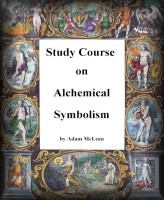 Study Courses
Study Courses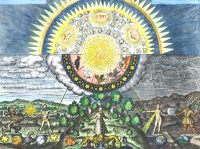 Alchemical, astrological and emblematic art prints 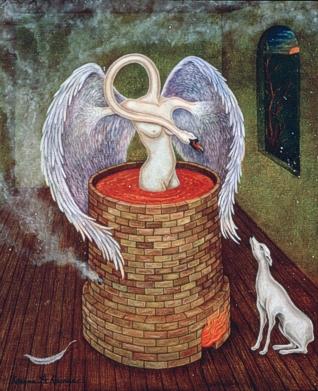 Alchemy and art 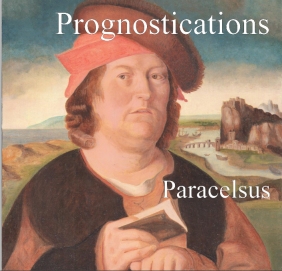 Art books Series 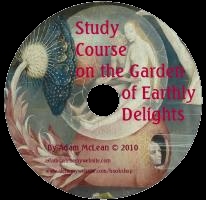 Study course on Bosch's Garden of Earthly Delights New Hieronymus Bosch Website |